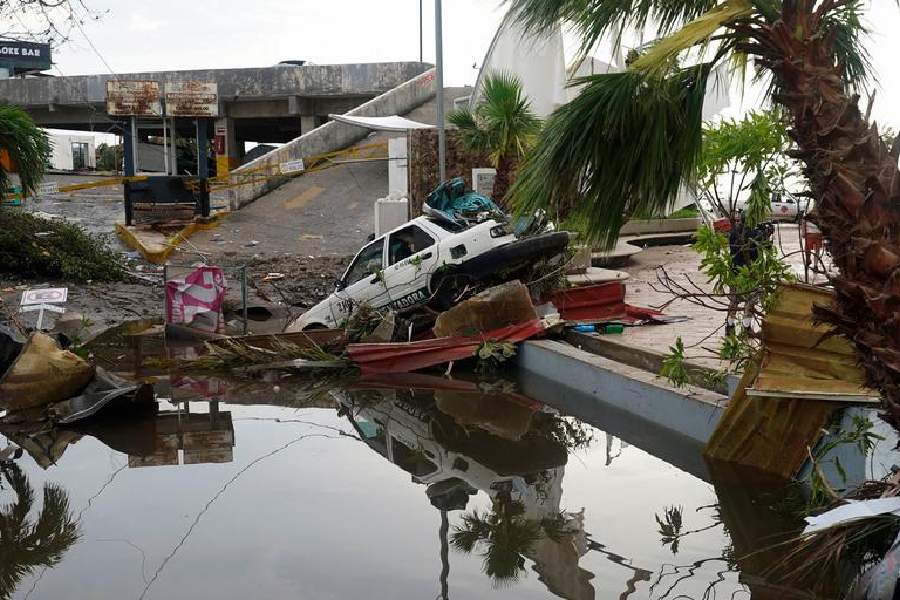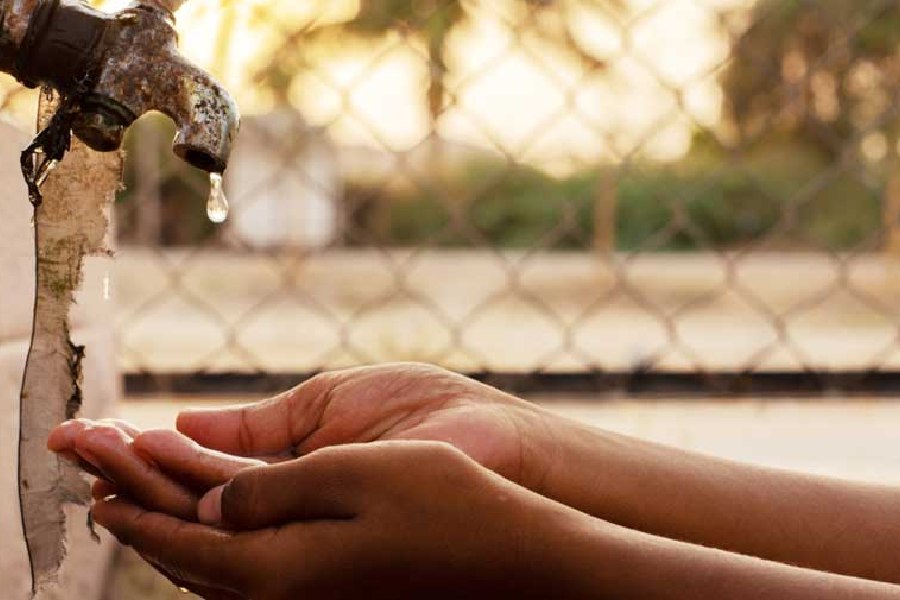With human-induced global heating blamed for more severe heatwaves, storms and floods in recent months, a report by the United Nations Environment Programme (UNEP) highlights an urgent need to fund adaptation measures that build resilience to climate extremes.
The research points out that critical investment actually declined in 2021, with the number of new adaptation projects stagnating for a decade as climate impacts worsen.
While the UNEP report partly attributes this retreat to external circumstances such as the COVID-19 pandemic and the economic impacts of Russia's invasion of Ukraine, the adaptation finance gap has nonetheless grown to between $194 billion (€183 billion) and $366 billion a year.
Meanwhile, the adaptation finance needs of climate vulnerable developing countries are 10-18 times above what they are currently receiving, notes "Adaptation Gap Report 2023: Underfinanced. Underprepared."
This adaptation gap is 50% greater than assumed before the study research began.
"This is a hugely worrying deceleration," wrote Inger Andersen, executive director of UNEP, in a report foreward.
"We are in an adaptation emergency. We must act like it. And take steps to close the adaptation gap, now," said UN Secretary-General António Guterres in his message on the report.
Adaptation funding can make a big difference if committed now, say the authors.
If an annual $16 billion were invested in making agriculture more resilient to heat and drought, through better water management or reforestation programs for example, it would prevent some 78 million people from starving or suffering chronic hunger, notes UNEP.
Meanwhile, every $1 billion invested in adaptation against coastal flooding could lead to a $14 billion reduction in economic damages from extreme storms and rising sea levels.
Yet in 2021, funding declined by around 15%, with around $21 billion generated globally by international adaptation finance mechanisms for developing countries.

The search for water during a historic drought in the Amazon in October 2023. Adaptation costs will spiral unless climate funds massively increase Deutsche Welle
Part of the problem, says lead author Henry Neufeldt, is that governments and private financers primarily contribute to disaster relief in times of crises, and fail to adequately fund long-term adaptation measures.
This reactive approach will force climate funds to pay much higher adaptation costs in the future, he says. The same goes for loss and damage, or climate compensation to be paid by the biggest greenhouse gas emitters, a key theme at this year's COP28 UN climate conference in Dubai.
Andersen called for COP28 to be "the moment that the world committed fully to insulating low-income countries and disadvantaged groups from damaging climate impacts."
'Many impacts can still be prevented'
UNEP identifies seven ways to increase funding, including through domestic expenditure, international finance and the private sector.
But adaptation first needs to become a key component of broader international climate financing that is also focused on mitigation and loss and damage. This funding should "take into account” the adaptation needs and priorities of developing countries, and especially women and disadvantaged groups, says UNEP. But much more private investment is also required.
Referring to the commitment made as part of the 2021 Glasgow Climate Pact to double international adaptation finance by 2025, UNEP says this goal can be "significantly” increased as parties negotiate a new collective climate finance target for 2030.
But according to Henry Neufeldt, the pledge made in Glasgow to double finance to around $40 billion annually, even if reached, "will only narrow the current gap by five to 10%."
Harjeet Singh, an adaptation and loss and damage expert at global climate think tank, Climate Action Network (CAN), reiterates the benefits of spending more on adaptation.
"There are still many impacts that can be prevented if we retrofit our homes, if we are able to have climate resilient seeds," Singh told DW. "If we are able to have strong early warning systems, that's what we mean when we say adaptation."
He suggests that the finance shortfall can be partly made up "if we start taxing and punishing these fossil fuel and polluting industries."
"It is shocking and ironic that fossil fuel companies, who are responsible for causing and exacerbating the climate crisis, continue to make profits to the tune of hundreds of billions of dollars," Singh told DW.
"On the other hand, communities who are not responsible for causing the climate crisis are suffering and they're not getting any support."
The goal is not only to fund badly need adaptation efforts in the Global South, but also the so-called "just transition" from oil and gas to clean energy in poorer countries.
Henry Neufeldt, meanwhile, believes that "a lack of ambition among Global North governments to support adaptation" has to change if the massive finance gap is to be bridged.
Adaptation planning and implementation also appear to be plateauing, according to the report. While five out of six countries now have at least one national adaptation planning instrument, including nature-based solutions such as reforestation to boost food security, planning is slowing and requires greater support, says UNEP.

Storm Daniel caused catastropic flooding in Libya in September, yet a huge funding gap is limiting ways to adapt to climate-linked disasters Deutsche Welle
The number of adaptation actions supported through the four international climate funds surveyed in the report was also lower in 2022 than in the previous year.
"We need to reinvigorate the process," said Neufeldt. "Climate impacts are rising and our investment isn't."
Failure to fund adaptation could trigger loss and damage blowout
As a result of slow adaptation, but also failed mitigation measures, climate-related losses and damages are also increasing, the report notes.
"It is very important to understand that if we don't adapt now, we will see more loss and damage," said Harjeet Singh.
Adaptation is no longer an investment in the future but a current unfolding crisis, Henry Neufeldt explained.
"Look at the wildfires, look at the flooding in Pakistan in 2022, the flooding in China this year," he said. "The less we adapt and mitigate, the more loss and damage we will have to deal with. That is much more expensive than dealing with adaptation now."












